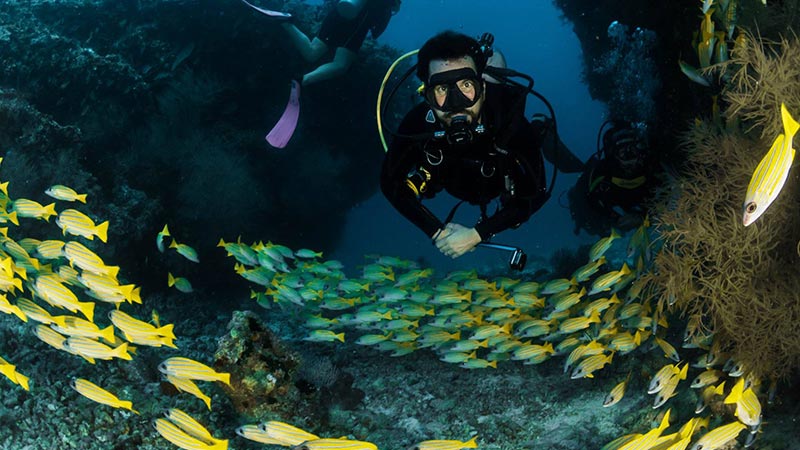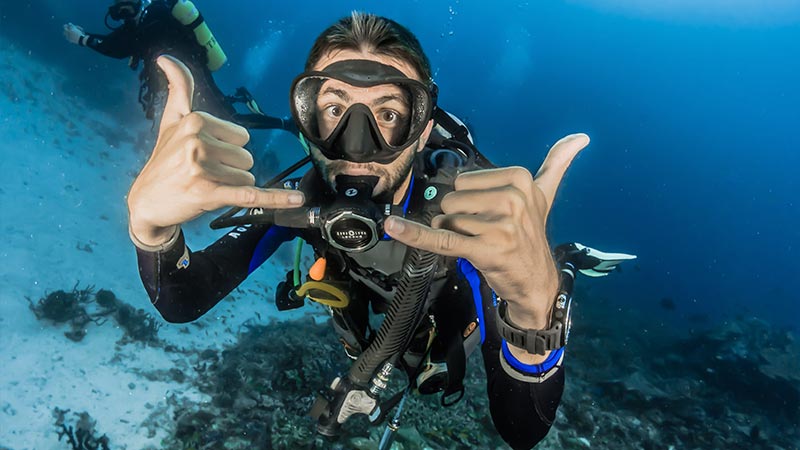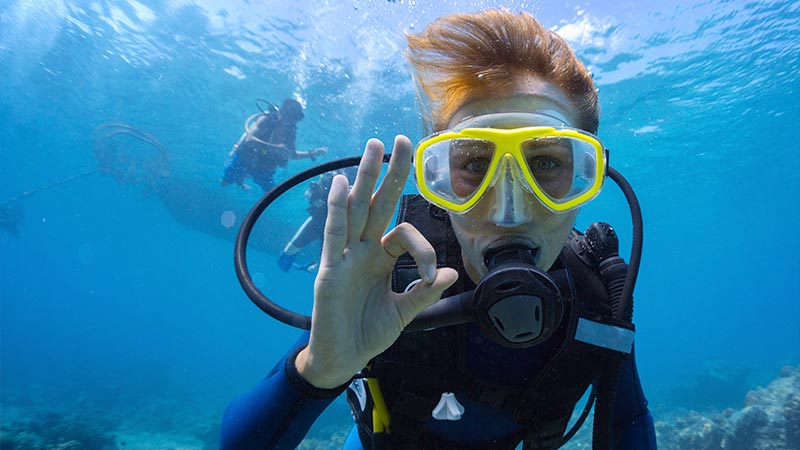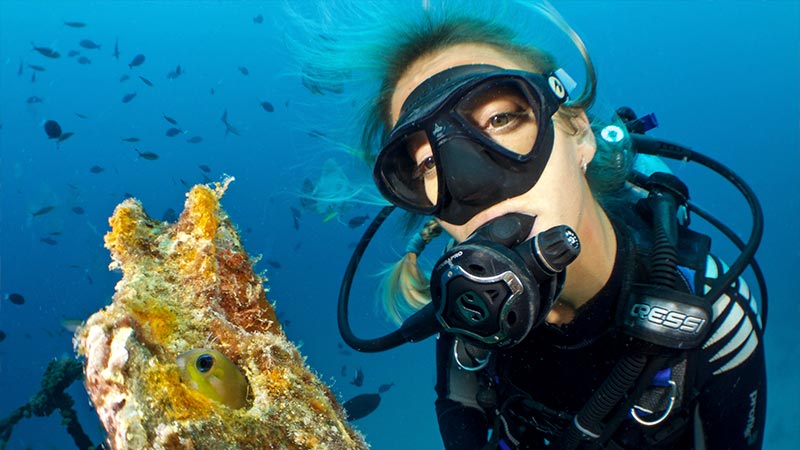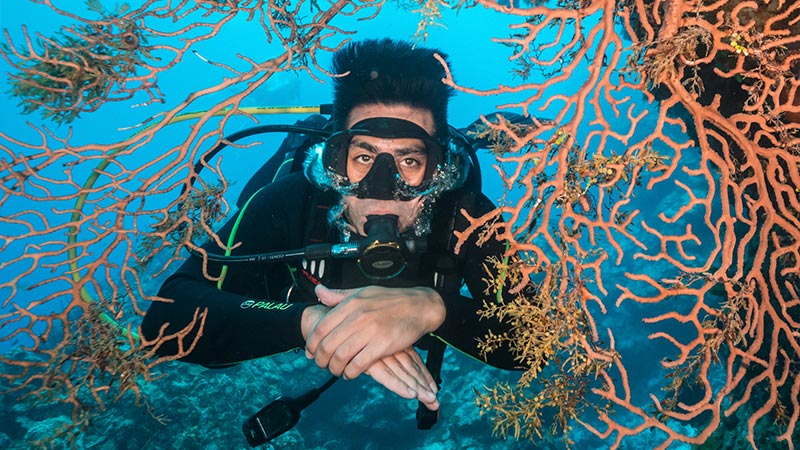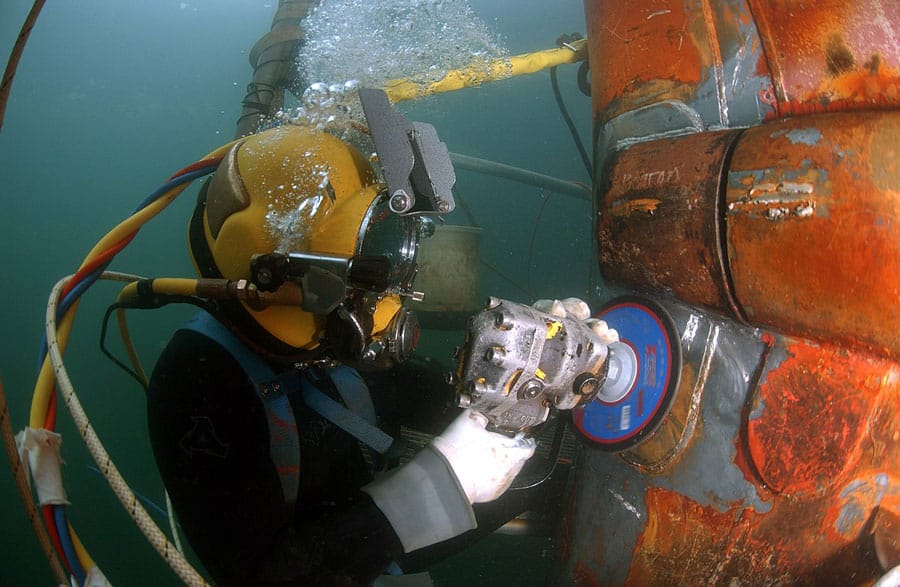1. Scuba Test: 10 Questions
1. How do you manage buoyancy when switching equipment or moving from saltwater to freshwater?
a. I always weigh myself as if I had to sink the Titanic.
b. I check the amount of weight I carry; I don’t like to carry too much to control buoyancy.
c. Not only do I check the amount of weight, but I also change the weight distribution throughout my body.
2. What is your position while diving?
a. Who cares? That’s the fun of diving! I can move however I want on the seabed.
b. I try to move in a horizontal position, but my legs often hang down.
c. I’m flatter than Tom Cruise doing a low flyover of the Top Gun control tower.
3. How do you behave underwater?
a. I use my arms and legs to move forward.
b. I only use my legs to move forward, but I have to constantly fight gravity to keep them horizontal and avoid touching the corals.
c. I never use my arms, I use the appropriate kick for each moment, I move slowly, and I breathe slowly and evenly.
4. How do you ascend?
a. I start inflating the BCD underwater, and at the safety stop, I hit the BCD inflator and shoot up like the Challenger.
b. I ascend slowly, but to be able to make the safety stop, I have to inflate the BCD.
c. I perform the 5-minute safety stop with neutral buoyancy and hardly any air in my BCD. Then I ascend using the strength of my legs, so it still takes me a minute to finish the ascent. I only inflate the BCD once I have my head out of the water.
5. How often do you renew your equipment?
a. My equipment is vintage, my wetsuit stands up on its own.
b. I renew each part of the equipment when it starts to give me trouble.
c. Every time my wife or kids have a birthday. I give them mine as a gift, and I buy myself a new one.
6. How often do you check the pressure gauge?
a. When I’m back on the boat, to see how much I’ve used and show off to the suckers who consume more than me.
b. Around halfway through the dive because I have a rough idea of my consumption rate based on the depth.
c. At 20 minutes, then every 10 minutes, and from there, approximately every 5 minutes.
7. How do you store and carry your diving equipment?
a. Store it? In the way it falls. If I’m carrying it, the regulator around my neck, the mask in one hand, the fins in the other, the weight belt over my shoulder…
b. I store it in a mesh bag or a plastic box like a farmer’s one. I place the fins at the bottom and the rest of the equipment without any specific order.
c. I have a dive bag with compartments, and I store the equipment in reverse order of how I’ll need it.
8. Do you perform buddy checks before each dive?
a. What’s the point?
b. Absolutely.
c. The dive check and the bubble check.
9. What do you do when there’s a strong current?
a. Move away from the bottom to avoid hitting the corals.
b. I position myself at the same depth as the Divemaster.
c. I stick to the bottom like a limpet.
10. What do you do when your buddy doesn’t pay attention during the dive?
a. If he ignores me, I’ll ignore him too. That would be great!
b. I insist that he looks at me.
c. I hide to teach him a lesson.




